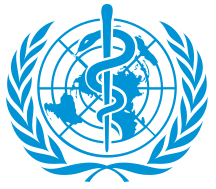
Epidemiological features, antimicrobial resistance profile and clinical outcomes of healthcare-associated infections in Islamic Republic of Iran / Shahnaz Rimaz;Parastoo Tajzadeh;Milad Bahrami;Mehdi Nooghabi;Babak Eshrati;Sohrab Effati;Maryam Yaghoobi
Tác giả : Shahnaz Rimaz;Parastoo Tajzadeh;Milad Bahrami;Mehdi Nooghabi;Babak Eshrati;Sohrab Effati;Maryam Yaghoobi
Nhà xuất bản : World Health Organization. Regional Office for the Eastern Mediterranean
Năm xuất bản : 2023
Chủ đề : 1. Anti-Bacterial Agents -- pharmacology. 2. Ciprofloxacin -- therapeutic use. 3. Communicable Diseases. 4. Cross Infection -- drug therapy. 5. Cross Infection -- epidemiology. 6. Cross Infection -- microbiology. 7. Delivery of Health Care. 8. Drug Resistance, Bacterial. 9. Intensive Care Units. 10. Iran. 11. Microbial Sensitivity Tests. 12. Retrospective Studies. 13. Journal / periodical articles.
Thông tin chi tiết
| Tóm tắt : | Background:Healthcare-associated infections are a major cause of mortality worldwide, especially in intensive care units where severely ill patients have limited physical space. Aims: To investigate the incidence, microbial aetiology, antimicrobial resistance profile, and mortality rate of healthcareassociated infections in intensive care units in the Islamic Republic of Iran.Methods:This observational study retrospectively reviewed the medical records of 1722 intensive care units patients with confirmed healthcare-associated infections at hospitals affiliated with Mashhad University of Medical Sciences in 2017–2019. Data was analysed using SPSS for Windows version 11. Categorical variables were described using frequency and percentage, whereas continuous variables were defined using mean (standard deviation) with 95% confidence interval (CI) for precision. Logistic regression analysis was used to estimate crude odds ratio (OR) and adjusted OR (AOR) with 95% CI, and to identify univariate and multivariate predictors of healthcare-associated infection mortality.Results:In total, 4077 pathogens were isolated, yielding a healthcare-associated infection incidence rate of 22.1%. The most common microorganisms were Acinetobacter spp. (25.0%), Klebsiella spp. (15.1%), Staphylococcus spp. (14.0%), and Candida spp. (12.3%). Ventilator-associated events (39.5%), urinary tract infections (22.7%), and bloodstream infections (14.8%) were the main types of infection. Comorbidities, skin and soft tissue infections, and infections with Acinetobacter spp., Klebsiella spp., Pseudomonas spp., and Candida spp. were significantly associated with higher mortality among intensive care unit patients. Gram-positive bacteria were most resistant to ciprofloxacin (49.2%), clindamycin (38.0%), and erythromycin (37.1%). Gram-negative bacteria were most resistant to ceftazidime (71.0%), ciprofloxacin (65.2%), and cefotaxime (60.5%). The overall mortality rate was 45.2%.Conclusion:Healthcare-associated infections in nearly half of intensive care unit patients were fatal, especially when caused by Acinetobacter spp., Klebsiella spp., Pseudomonas spp., or Candida spp. Therefore, effective strategies must be implemented to combat antibiotic-resistant bacteria, along with stricter adherence to infection control programmes. |
Thông tin dữ liệu nguồn
| Thư viện | Ký hiệu xếp giá | Dữ liệu nguồn |
|---|---|---|
 Tổ chức y tế thế giới
Tổ chức y tế thế giới
|
|
https://iris.who.int/handle/10665/377225 |
 Tài liệu điện tử
Tài liệu điện tử 
 Đại học Công nghệ - ĐHQGHN
Đại học Công nghệ - ĐHQGHN  Đại học Giáo dục - ĐHQGHN
Đại học Giáo dục - ĐHQGHN  Đại học khoa học tự nhiên - ĐHQGHN
Đại học khoa học tự nhiên - ĐHQGHN  Đại học Khoa học Xã hội và Nhân văn - ĐHQGHN
Đại học Khoa học Xã hội và Nhân văn - ĐHQGHN  Đại học Kinh tế - ĐHQGHN
Đại học Kinh tế - ĐHQGHN  Đại học Ngoại ngữ - ĐHQGHN
Đại học Ngoại ngữ - ĐHQGHN  Đại học quốc gia Hà Nội
Đại học quốc gia Hà Nội  Đại học Y - Dược - ĐHQGHN
Đại học Y - Dược - ĐHQGHN  Học Viện Hàng Không Việt Nam
Học Viện Hàng Không Việt Nam  Thư viện đại học Cần Thơ
Thư viện đại học Cần Thơ  Thư viện Huyện Bình Chánh - TVKHTH TP.HCM
Thư viện Huyện Bình Chánh - TVKHTH TP.HCM  Thư viện huyện Bình Minh - TV Vĩnh Long
Thư viện huyện Bình Minh - TV Vĩnh Long  Thư viện huyện Bình Tân - TV Vĩnh Long
Thư viện huyện Bình Tân - TV Vĩnh Long  Thư viện Huyện Cần Giờ - TVKHTH TP.HCM
Thư viện Huyện Cần Giờ - TVKHTH TP.HCM  Thư viện Huyện Củ Chi - TVKHTH TP.HCM
Thư viện Huyện Củ Chi - TVKHTH TP.HCM  Thư viện Huyện Hóc Môn - TVKHTH TP.HCM
Thư viện Huyện Hóc Môn - TVKHTH TP.HCM  Thư viện huyện Long Hồ - TV Vĩnh Long
Thư viện huyện Long Hồ - TV Vĩnh Long  Thư viện huyện Mang Thít - TV Vĩnh Long
Thư viện huyện Mang Thít - TV Vĩnh Long  Thư viện Huyện Nhà Bè - TVKHTH TP.HCM
Thư viện Huyện Nhà Bè - TVKHTH TP.HCM  Thư viện huyện Tam Bình - TV Vĩnh Long
Thư viện huyện Tam Bình - TV Vĩnh Long  Thư viện huyện Trà Ôn - TV Vĩnh Long
Thư viện huyện Trà Ôn - TV Vĩnh Long  Thư viện Khoa học Tổng hợp TP.HCM
Thư viện Khoa học Tổng hợp TP.HCM  Thư viện quận 1 - TVKHTH TP.HCM
Thư viện quận 1 - TVKHTH TP.HCM  Thư viện quận 10 - TVKHTH TP.HCM
Thư viện quận 10 - TVKHTH TP.HCM  Thư viện quận 11 - TVKHTH TP.HCM
Thư viện quận 11 - TVKHTH TP.HCM  Thư viện quận 12 - TVKHTH TP.HCM
Thư viện quận 12 - TVKHTH TP.HCM  Thư viện quận 2 - TVKHTH TP.HCM
Thư viện quận 2 - TVKHTH TP.HCM  Thư viện quận 3 - TVKHTH TP.HCM
Thư viện quận 3 - TVKHTH TP.HCM  Thư viện quận 4 - TVKHTH TP.HCM
Thư viện quận 4 - TVKHTH TP.HCM  Thư viện quận 5 - TVKHTH TP.HCM
Thư viện quận 5 - TVKHTH TP.HCM  Thư viện quận 6 - TVKHTH TP.HCM
Thư viện quận 6 - TVKHTH TP.HCM  Thư viện quận 7 - TVKHTH TP.HCM
Thư viện quận 7 - TVKHTH TP.HCM  Thư viện quận 8 - TVKHTH TP.HCM
Thư viện quận 8 - TVKHTH TP.HCM  Thư viện quận Bình Tân - TVKHTH TP.HCM
Thư viện quận Bình Tân - TVKHTH TP.HCM  Thư viện quận Bình Thạnh - TVKHTH TP.HCM
Thư viện quận Bình Thạnh - TVKHTH TP.HCM  Thư viện quận Gò Vấp - TVKHTH TP.HCM
Thư viện quận Gò Vấp - TVKHTH TP.HCM  Thư viện quận Phú Nhuận - TVKHTH TP.HCM
Thư viện quận Phú Nhuận - TVKHTH TP.HCM  Thư viện quận Tân Bình - TVKHTH TP.HCM
Thư viện quận Tân Bình - TVKHTH TP.HCM  Thư viện quận Tân Phú - TVKHTH TP.HCM
Thư viện quận Tân Phú - TVKHTH TP.HCM  Thư viện Quốc gia Việt Nam
Thư viện Quốc gia Việt Nam  Thư viện thành phố Thủ Đức (cơ sở 1) - TVKHTH TP.HCM
Thư viện thành phố Thủ Đức (cơ sở 1) - TVKHTH TP.HCM  Thư viện thành phố Thủ Đức (cơ sở 2) - TVKHTH TP.HCM
Thư viện thành phố Thủ Đức (cơ sở 2) - TVKHTH TP.HCM  Thư Viện Tỉnh An Giang
Thư Viện Tỉnh An Giang  Thư viện tỉnh Vĩnh Long
Thư viện tỉnh Vĩnh Long  Trung tâm giáo dục quốc phòng và An ninh - ĐHQGHN
Trung tâm giáo dục quốc phòng và An ninh - ĐHQGHN  Trung tâm Hỗ trợ Sinh viên - ĐHQGHN
Trung tâm Hỗ trợ Sinh viên - ĐHQGHN  Trường Đại học Luật - ĐHQGHN
Trường Đại học Luật - ĐHQGHN  Trường Khoa học liên ngành và nghệ thuật - ĐHQGHN
Trường Khoa học liên ngành và nghệ thuật - ĐHQGHN  Trường Quản trị và Kinh doanh - ĐHQGHN
Trường Quản trị và Kinh doanh - ĐHQGHN  Viện Công nghệ Thông tin - ĐHQGHN
Viện Công nghệ Thông tin - ĐHQGHN  Viện Đảm bảo chất lượng giáo dục - ĐHQGHN
Viện Đảm bảo chất lượng giáo dục - ĐHQGHN  Viện Quốc tế Pháp ngữ - ĐHQGHN
Viện Quốc tế Pháp ngữ - ĐHQGHN  Viện Tài nguyên và Môi trường - ĐHQGHN
Viện Tài nguyên và Môi trường - ĐHQGHN  Viện Vi sinh vật và Công nghệ Sinh học - ĐHQGHN
Viện Vi sinh vật và Công nghệ Sinh học - ĐHQGHN  Viện Việt Nam học và Khoa học phát triển - ĐHQGHN
Viện Việt Nam học và Khoa học phát triển - ĐHQGHN